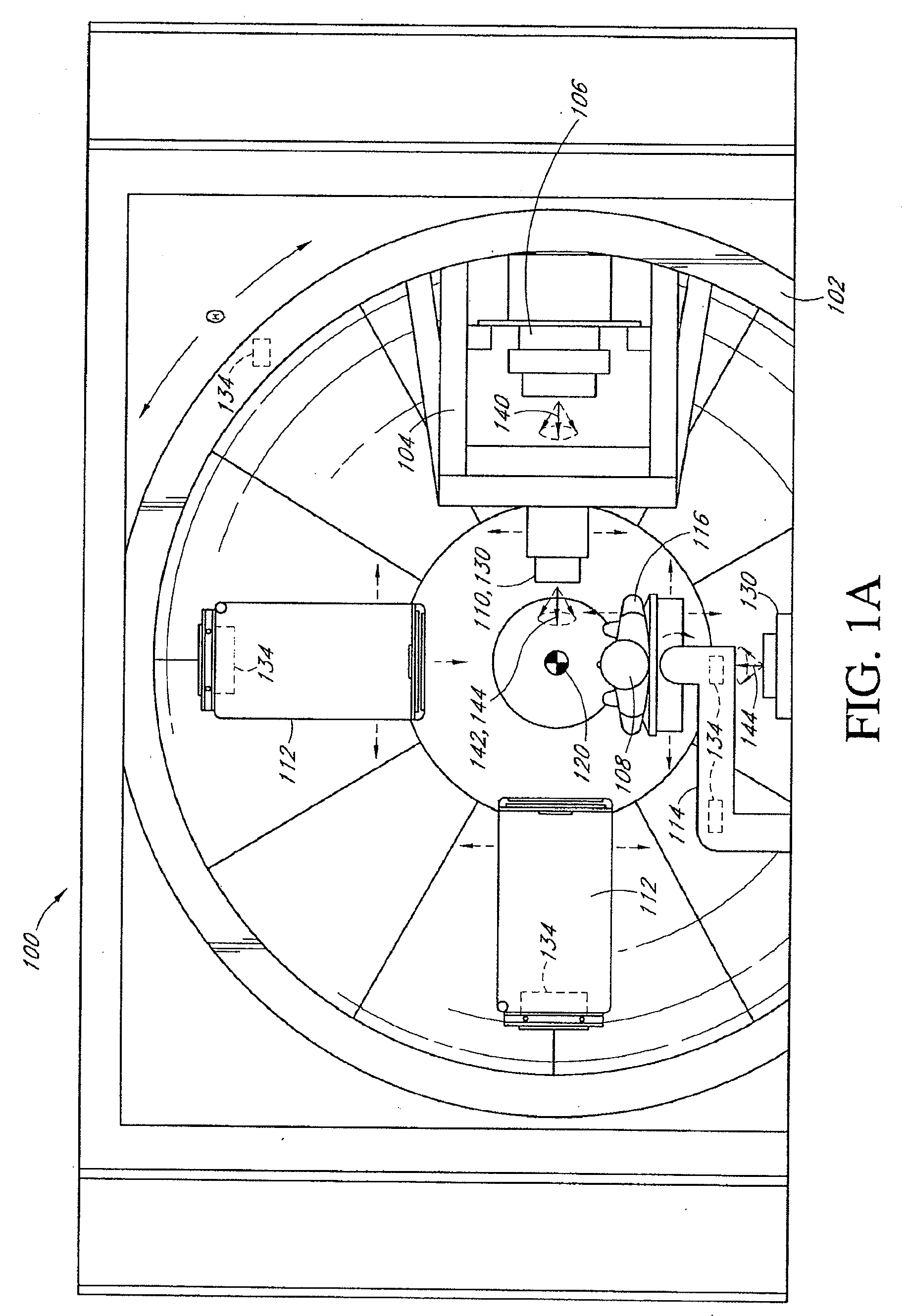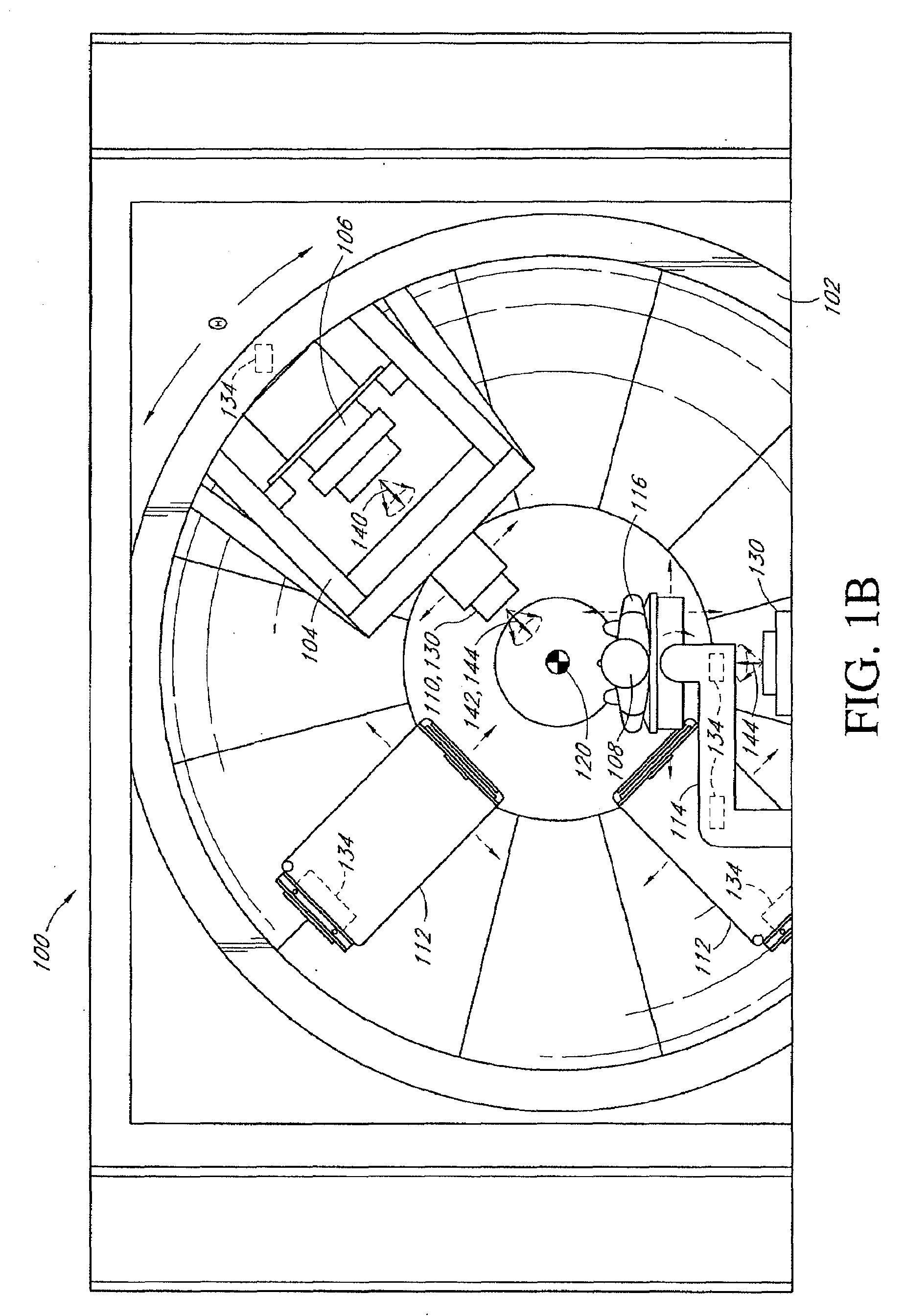Patient alignment system with external measurement and object coordination for radiation therapy system
a radiation therapy system and alignment system technology, applied in the field of radiation therapy systems, can solve the problems of inaccurately executing the patient positioning, the radiation therapy apparatus is an expensive piece of medical equipment to construct and maintain, and the typical implementation of the radiation therapy regimen, so as to reduce the latency of the registration process, improve patient throughput, and facilitate variable and unpredictable mechanical tolerances and structural flex
- Summary
- Abstract
- Description
- Claims
- Application Information
AI Technical Summary
Benefits of technology
Problems solved by technology
Method used
Image
Examples
Embodiment Construction
[0037]Reference will now be made to the drawings wherein like reference designators refer to like parts throughout. FIGS. 1A and 1B illustrate schematically first and second orientations of one embodiment of a radiation therapy system 100, such as based on the proton therapy system currently in use at Loma Linda University Medical Center in Loma Linda, Calif. and as described in U.S. Pat. No. 4,870,287 of Sep. 26, 1989 which is incorporated herein in its entirety by reference. The radiation therapy system 100 is designed to deliver therapeutic radiation doses to a target region within a patient for treatment of malignancies or other conditions from one or more angles or orientations with respect to the patient. The system 100 includes a gantry 102 which includes a generally hemispherical or frustoconical support frame for attachment and support of other components of the radiation therapy system 100. Additional details on the structure and operation of embodiments of the gantry 102 ...
PUM
| Property | Measurement | Unit |
|---|---|---|
| distance | aaaaa | aaaaa |
| optical images | aaaaa | aaaaa |
| movement | aaaaa | aaaaa |
Abstract
Description
Claims
Application Information
 Login to View More
Login to View More - R&D
- Intellectual Property
- Life Sciences
- Materials
- Tech Scout
- Unparalleled Data Quality
- Higher Quality Content
- 60% Fewer Hallucinations
Browse by: Latest US Patents, China's latest patents, Technical Efficacy Thesaurus, Application Domain, Technology Topic, Popular Technical Reports.
© 2025 PatSnap. All rights reserved.Legal|Privacy policy|Modern Slavery Act Transparency Statement|Sitemap|About US| Contact US: help@patsnap.com



